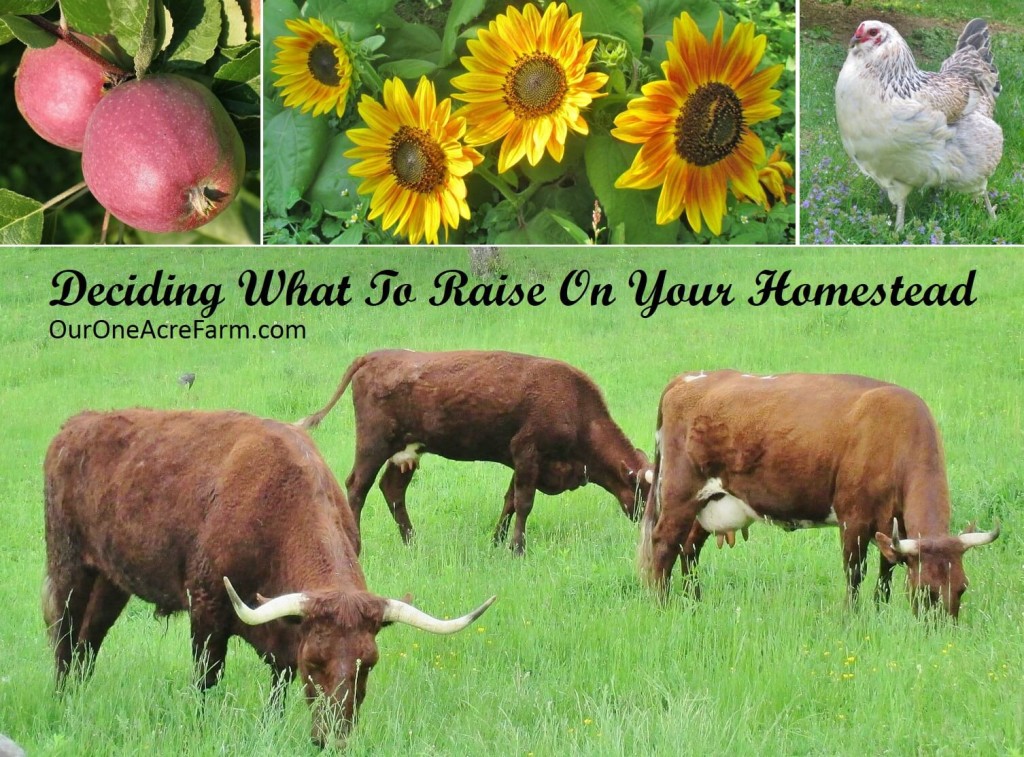
Planning a homestead or backyard farm involves taking inventory of your resources and yourself.
Once you’ve been bitten by the farming/homesteading bug, it’s fun to fantasize about the possibilities. In fact, the possibilities can be overwhelming. Perhaps that is why readers ask: What should we raise? What’s the easiest thing to raise? What’s the best thing to raise? My answer to those questions is “I don’t know!” Honest! Some people won’t accept that, but I can’t possibly know, because I don’t know anything about their climate, land, food preferences, finances, or town ordinances. All of those things, among others, factor in to what’s “easiest” and “best” for you. So I created this a guide to inventorying your resources and yourself, so you can determine what to raise on your homestead.
What To Raise On Your Homestead Or Backyard Farm
This guides you through 15 critical considerations when planning to start a homestead or backyard farm. Please feel free to share your own ideas or ask questions in the comment section at the end!
1. Local Laws and Regulations
When planning a homestead or backyard farm, check the local laws and regulations for restrictions on types of livestock, limitations on numbers of animals, distance of structures from property lines, etc. Check state and local wetland laws, which may limit or prohibit activity within a certain distance from streams, swamps, vernal pools, etc. Ignorance is no excuse for a violation, and you may have to relocate your set-up or remove it entirely, even if you were unaware of restrictions.
2. Space
While clever space saving strategies and vertical gardening can help you pack a lot into a small backyard farm, as detailed in my popular post, How to Start a Backyard Farm, a small suburban lot isn’t going to support larger livestock, even with lax town ordinances and saintly neighbors. And for those who live where livestock are allowed? Still, take a serious look at the space you can provide. Will animals have the freedom to exercise their natural behaviors? If not, then think smaller animals, or think vegetable garden, and purchase your meat, cheese, and eggs at a larger local farm. Self-sufficiency is a wonderful trend but unfortunately you find the occasional homestead where livestock don’t get much better care than those in factory farms. It’s heart breaking, but yes, I have seen this.
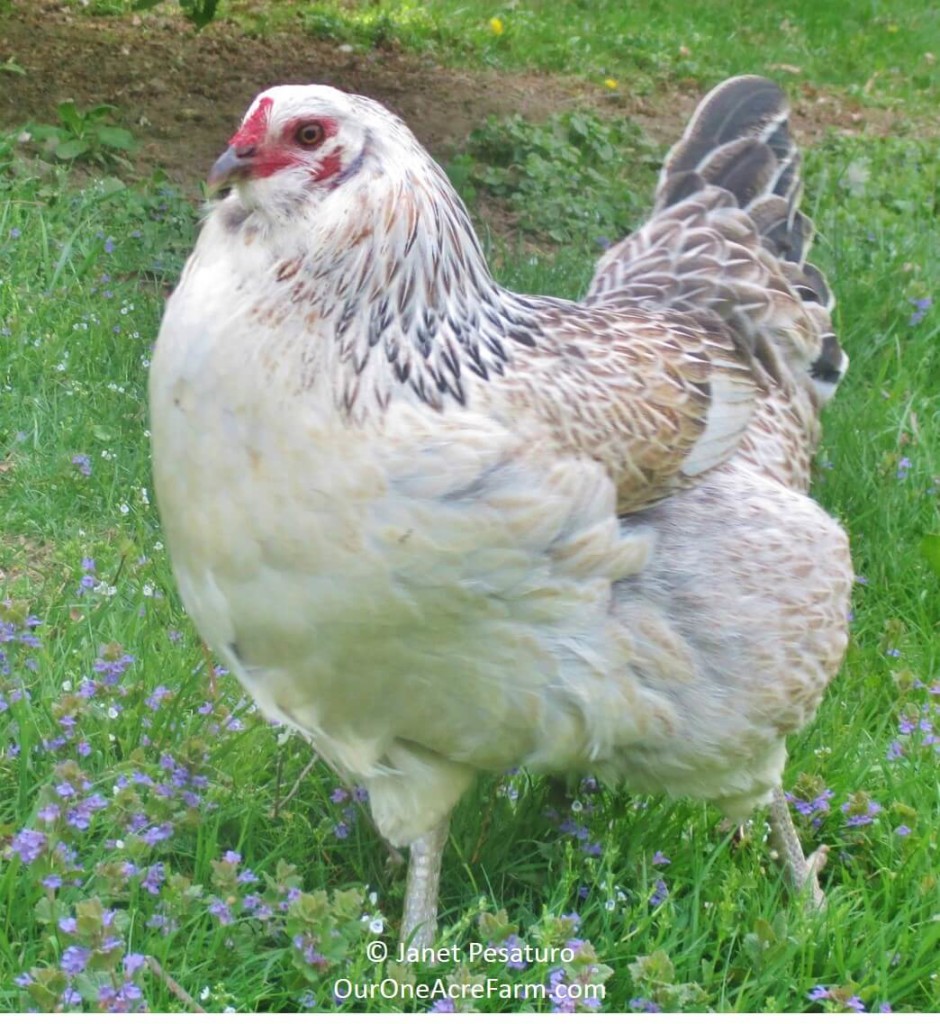
A small flock of chickens usually works well on smaller homesteads, but be sure you have space enough to let express their natural behaviors. This is one of my Easter Eggers enjoying the backyard.
3. What You Like to Eat
I recognize the allure of raising or growing something because it’s “easy”. As a novice, you want to see results. Growing zucchini is incredibly rewarding – it’s amazing how well those plants produce. But if you don’t love them, either fresh or preserved, what will you do with them? Neighbors quickly tire of them, too. This sounds stupid and obvious, but it’s a common mistake for beginners, myself included. What was I thinking, planting 12 tomato plants in our first year here? I’ve found that 5 or 6 plants yield plenty of tomatoes for our family of 4. Now I grow small quantities of a wider variety of vegetables. There are no “best” crops to grow and no “best” livestock to raise.
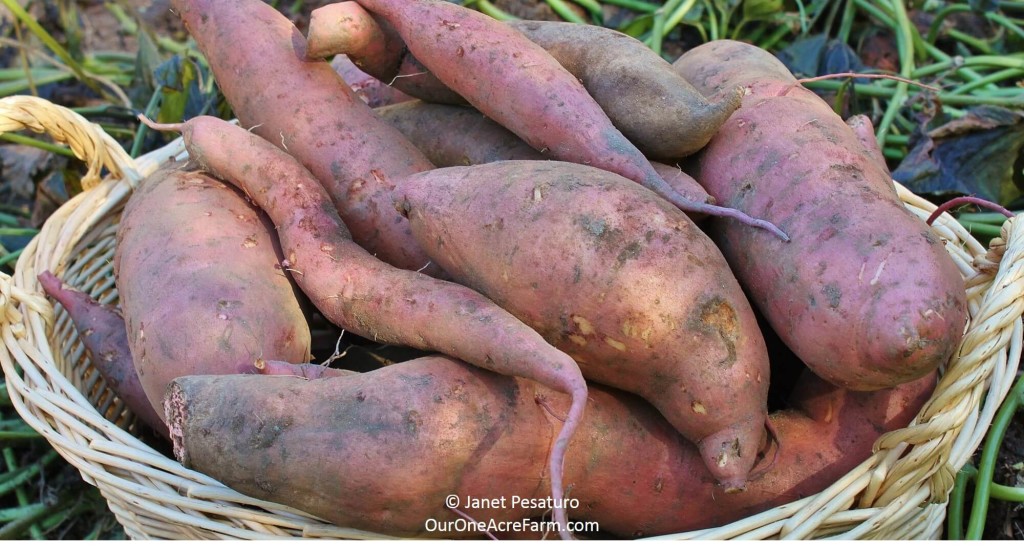
Sweet potatoes don’t do well in my climate, but I’m working on extending the warm season to increase yield.
4. Climate
When designing your homestead, think about the conditions on your land in each season and find out if the animals you want can tolerate them. For most species, there is a breed to match almost any climate. Highland cattle thrive in extremely cold, snowy regions but will roast in hot, humid climes. With regular hair instead of wool, black-bellied Barbados sheep thrive in heat and humidity. Most chicken breeds adapt to most climates, but those (such as the Chantecler) bred to thrive in extreme cold will lay better in winter.
Vegetables also have preferences for temperature and precipitation, and there are many online sources and excellent books detailing the climatic suitability of each vegetable plant. Learn to love those which grow well in your climate. I never cared much for leafy greens, but they do so well here in our cool spring weather that I’ve learned to love them.
You might also create micro-climates to expand your options. For example, plant trees and shrubs to create shade for smaller plants (such as lettuces) which prefer cool weather. I love sweet potatoes, but they need a much longer summer than we have here in New England, so I’m working on season extending strategies. But until I succeed, I won’t devote much space to them.
5. Soil
If your soil is very poor (low in organic matter), you’ll need to enrich it before creating a good pasture or vegetable garden. If your soil is poorly drained, look for crops that can tolerate wet soil. But avoid sheep because cool, wet conditions exacerbate foot scald and foot rot, which afflict sheep.
You can test your soil to determine how to improve it for the crops you want to grow. Larger property owners (or potential buyers) might want to access online USDA soil maps to see if the soils on a property are good for crops or pasture.
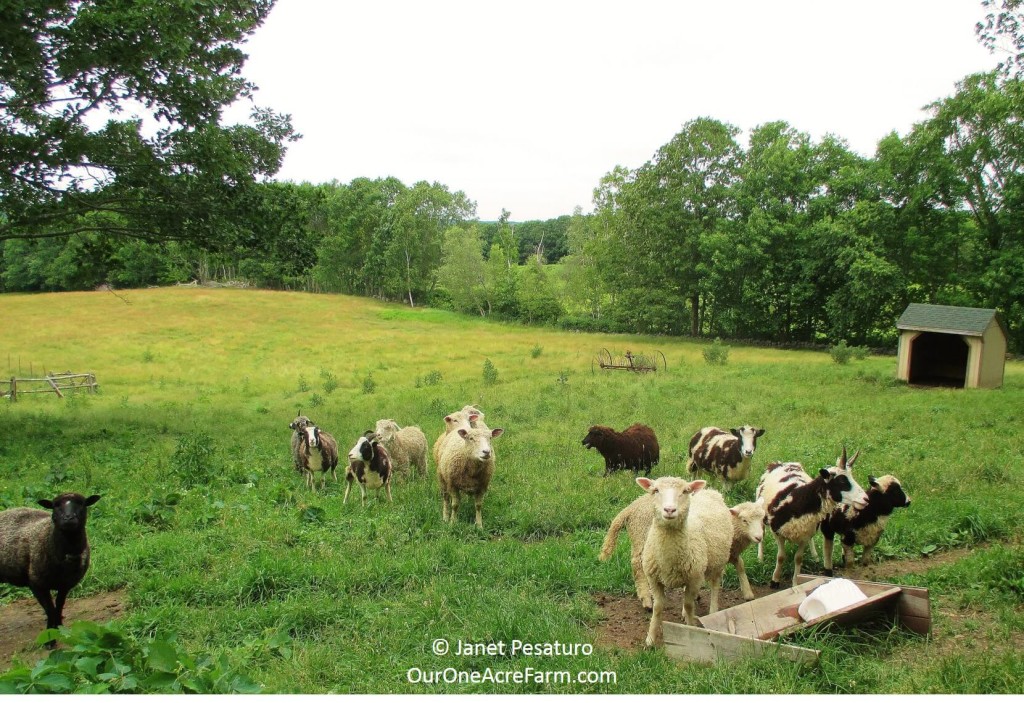
If you have well-drained, upland pasture, you can raise any grazing livestock, like these sheep.
6. Existing ecosystems
My experience in fielding questions like “what’s the best thing to raise on a homestead” is that a lot of people think of their land as a blank slate where they can create any ecosystem they want. That is sometimes possible and desirable, but working within existing ecosystems is often much easier.
Let’s say you have 10 acres of forested land and have your heart set on raising cows, hay, and corn. Hmm, clearing that forest to create pasture, hayfield, and cropland is an awful lot of work. Have you thought of forest raised pigs and/or creating a food forest? Oh, and there’s a beautiful pond nestled in the woods? How about raising ducks?
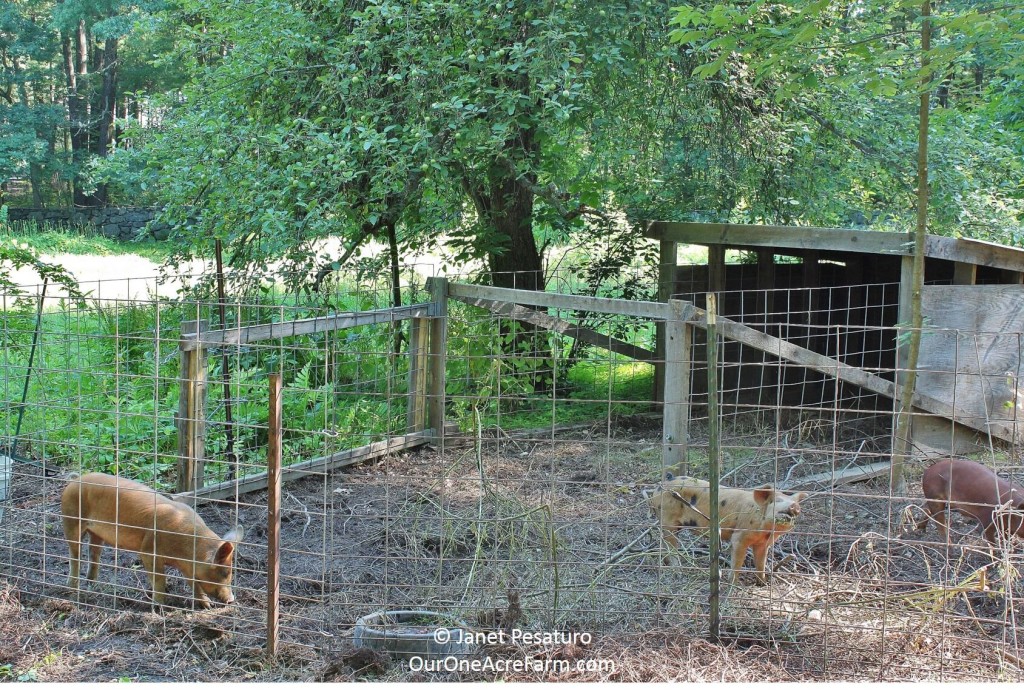
A small land holder in my town raises pigs in her brushy, abandoned apple orchard, rotating the enclosure daily. This is much easier than clearing the land for animals that need good quality pasture.
7. Lay of the Land
Layout is more important than some ambitious wannabe farmers care to admit. I know, because that was me, once. Now our vegetable garden graces the corner of our land furthest from the kitchen. Sun exposure is best there, and it works well enough because our property is small, but if I were to do it again, I’d make proximity to the kitchen a higher priority.
As for the proximity of animals to the house, opinions vary, and you’ll have to determine your own preferences. Setting them far from the house keeps noise, odor, and rodents far from the house. However, in snowy, icy, and rainy conditions, or when an animal needs frequent attention, you might prefer a very shorter walk to the barn. If your property is very small, you will have no choice but to locate animal housing close to your own. But be sure to check the zoning regulations in your community.
8. Fencing and Outbuildings
Are there any existing fences or outbuildings on your property? Are they appropriate for the animals you want? Will they keep your animals safe from the predators in your area? Don’t assume that existing fencing on an existing farm excludes all of the local predator species. Your predecessor might have relied on bullets more than you’d want to.
If there are no existing outbuildings or fences on your property, can you afford to build them? You might have to research the needs of the livestock and the types of predators in your region, before you can answer that question.

This beautiful farmstead at Old Sturbridge Village in Massachusetts has pastures, fencing, and outbuildings suitable for the stock they raise. If your land doesn’t, do you have the resources to create them?
9. Predators
Learning about the potentially problematic wildlife in your region is an important part of starting a homestead or backyard farm. Is there an abundance of deer, rabbits, or ground hogs? If so, you will need appropriate deterrents if you hope to eat the vegetables you grow. Are you in range country, where grizzly bears, cougars, or wolves might threaten cattle, sheep, or goats? If so, learn how to keep your livestock safe at Agriculture and Carnivores. Are you hoping to raise chickens where everything from tiny weasel to enormous bear could wreak havoc in your coop? If so, check out my post on How to Predator Proof Your Chicken Coop.
10. Diversity
A diversity of plants and animals makes for a more intricate farm ecosystem. This helps prevent pest outbreaks, as you can read in Permaculture Principles. It also allows you to use the outputs of some crops as inputs to others. For example, our bolting greens are fed to the chickens. Our rabbits, when we had them, devoured the apple tree prunings in winter. The droppings of both rabbits and chickens are marvelous additions to the compost, which, in turn, feed our fruit and vegetable crops.
Backyard farms tend to be diverse by default, because most backyard farmers aim to feed their families, not to produce a large quantity of one product for the market. Also, they exist in the context of neighboring homes and gardens, screens of trees between houses, and so on. But if you’re lucky enough to have a larger property with fantasies of raising fruit, for example, think in terms of an integrated orchard to minimize pest and disease problems, increase productivity from the land, conserve soil and water, and confer resilience to your system (i.e., if one crop fails, you can rely on others).
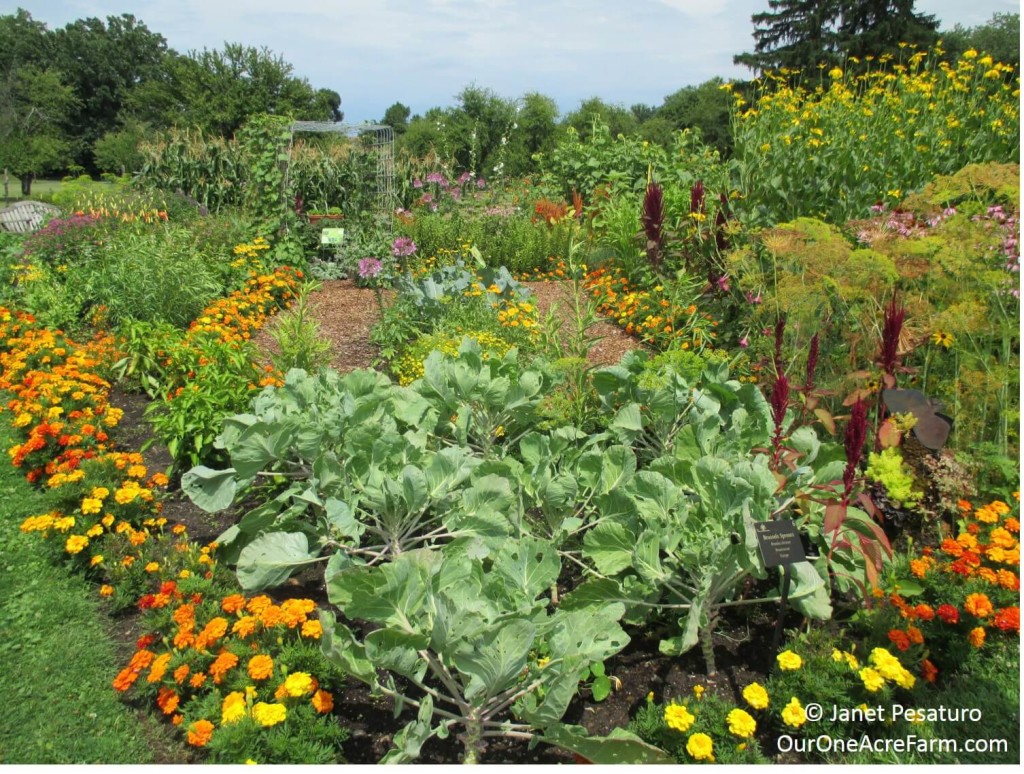
In the King’s Garden at Fort Ticonderoga, NY, flowers, herbs, and vegetables all rub elbows. High biodiversity in the farm or garden helps prevent pest outbreaks.
11. Kitchen
A squeaky clean modern kitchen is a thing of beauty and often a family gathering place, but a farmer’s kitchen is a work space. As interpreters at Old Sturbridge Village, an 1830’s living museum, will demonstrate, the farmstead kitchen was constantly busy, dirty, and smelly. Rendering lard, canning vegetables, making jam, grinding sausage, churning butter, and making cheese are all kitchen activities. Spills and splats decorate the floor. If you’re going to start homesteading, that might be your kitchen. Is there enough counter space? Are the floors and counters easy to clean?
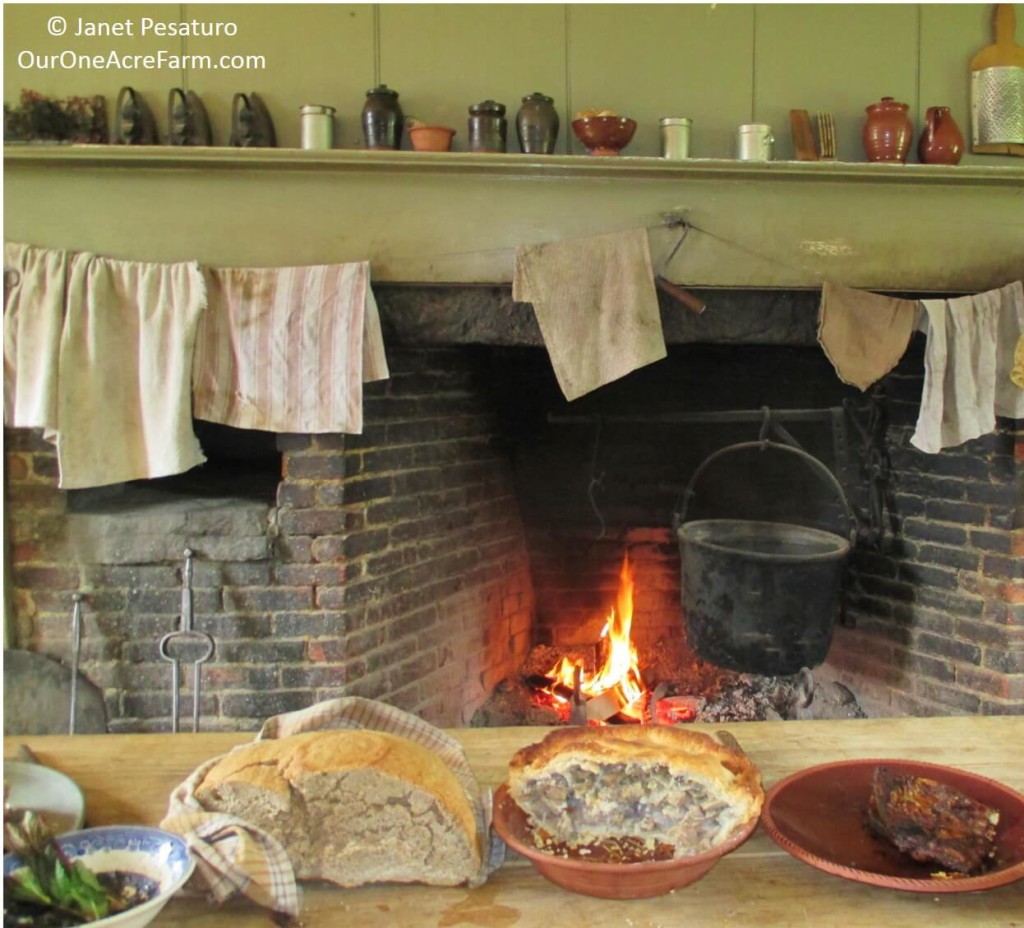
A farmstead kitchen can be a dirty, smelly work space. This 1830’s kitchen looks charming but with it’s pine board floors and wooden counter tops, it is difficult to clean.
12. Storage Space
The grocery store is a wonderful convenience, not only because it eliminates the need to grow food, for those who don’t want to, but also because we don’t have to store more than a few days worth of food. But if you plan to grow some of your own food, you’ll probably want to preserve some of it. Do you have enough shelf space for canned goods? How’s your freezer space? Do you have a root cellar? A place for garden tools? A wood shed? If you do not have the storage space for your future homestead products, do you have the resources to create it?

Do you have shelf space for a lot of canned goods? Freezer space for meats and produce you want to raise?
13. Money
If farming is a hobby and money is no object, you can skip right over this section. But on the other end of the spectrum are those who need to make a profit on the food they produce. They will need to do some market research. Is there a demand for what you want to produce? Is there a demand for something you hadn’t thought of, but might like to grow? Here is a great resource on Selling Successfully at Farmers Markets.
Most people probably fall between those two extremes. They want to raise some of their own food, and expect (or need) it to be cheaper than supermarket fare. If you fall into that category, you should sit down with the balance sheet before building a barn or clearing the forest. Industrial farming is extremely efficient and cost effective, at least without taking environmental impact into consideration. It’s often more expensive to raise your own food.

There may be a market in your area for crops that don’t typically come to mind when contemplating “homestead” or “farm”. For example, daylilies, which grow well in many climates, sell well in many areas. I know of several daylily farms here in Massachusetts, from small backyard plots to large fields of these perennial beauties.
14. Neighbors
We homesteaders tend to be the self reliant sort who want to do as we please on our own property. However, I think it’s a good idea to think about the neighbors’ tolerance for farm related noise and odor, and your tolerance for their potentially poultry pursuing pooches. In my own fine town, I know of several disputes over farm activity between neighbors, at least one of which culminated in legal action, and another involving threats of shooting a dog. Some people don’t seem to mind that sort of drama in their lives, but I don’t want it, so I find ways to coexist in peace. If you’re like me, you might want to give more thought to your fantasy of setting the horse shed by the property line nearest your neighbor’s house. You might also want to contain your chickens with fencing so they will not wander into the mouths of neighboring dogs.
There are also some farm related benefits to neighbors, though. Trading is one of them. We tap our sugar maples and one of our neighbors keeps bees. We trade maple syrup for honey.
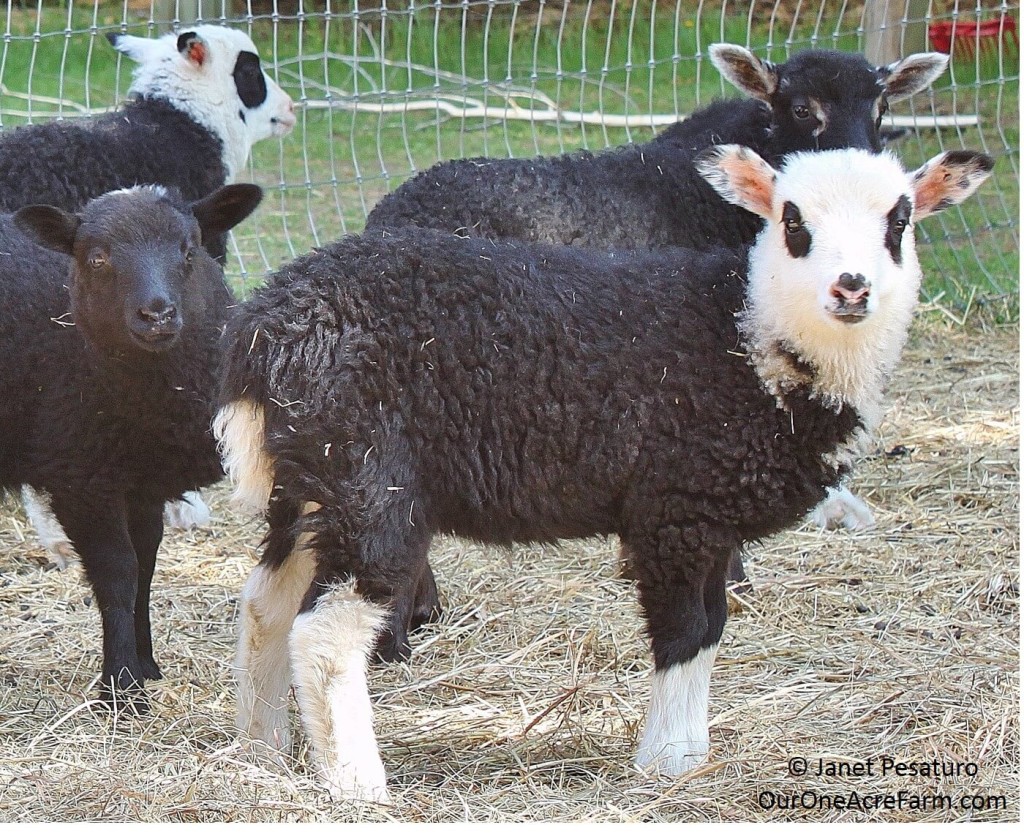
Lamb is delicious, and this small breed of sheep (Shetland) will fit on smaller homesteads. But could you kill these lambs or send them for slaughter after caring for them and gaining their trust? If not, think vegetable, fruit, herb, or flower crops.
15. Special Challenges in Animal Husbandry (disease, injury, butchering)
Not everyone has the stomach for helping animals with nasty infections, painful injuries, debilitating diseases, and complicated births. Before deciding on livestock, familiarize yourself with problems common to that species. Are you up to dealing with them? Even in the middle of the night? If you’re not liking the sound of this, there is some good news. There are hardier breeds within each livestock species. For example, highly domesticated sheep need a lot of assistance when giving birth, but the more “primitive” Shetland sheep has retained the ability to lamb with little to no assistance. You can read more about this breed in Raising Shetland Sheep.
And even more difficult than dealing with illness and assisting birth, is butchering. Farming is a cruel business, and I refuse to minimize or euphemize it. Yes, I know death is part of life and so on and so forth, but it’s still cruel from the animal’s perspective. It’s not just that animals must be killed, it’s that you have to kill them (or send them for slaughter) after you’ve cared for them and earned their trust. It’s a horrible betrayal, and I don’t think I’m up to it. Quite honestly, I’d rather hunt than kill animals I’ve raised. You might be interested in the musings of this hunter, interviewed in Hunting Ethically, who wonders if he’d go vegetarian if he had to kill animals he raised himself.
What are your tips for planning a homestead or backyard farm? Feel free to share your ideas and ask questions in the comment section below!
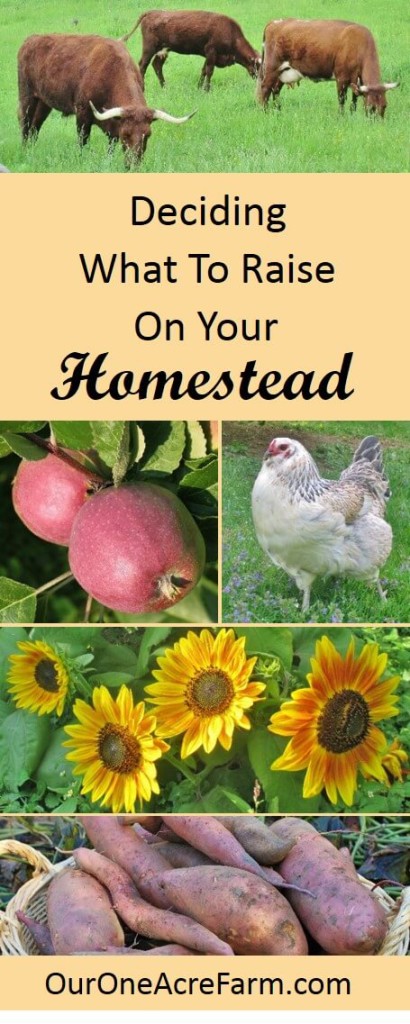
Please pin THIS image!











I’m so inspired by your articles… recently moved back to Maine with a little over an acre & a passion for backyard farming. Thank you!
Glad you enjoyed it, Lisa, and I hope it helps you plan your backyard farm. I love Maine! You are lucky to be there.
I was referred to your article by a friend. We recently purchased 70 acres in TN and have many possibilities with our land. I was intrigued to learn about the Barbados Sheep. They should be perfect on our main pasture. Thank you for your article – it has given us much to consider. We look forward to your future postings.
70 Acres in TN sounds terrific. I’m glad the article was useful and wish you luck with your farm to be. Thanks for commenting!
NICE JOB KEEP IT UP
Thank you!
Pingback: 8 Reasons to Grow Daylilies - One Acre Farm
Thank you for the article. I am planning on a small backyard farm when we move. Where we live now does not allow for any farm animals. I find your comments on slaughtering animals welcome. I want chickens for eggs, goats for milk. I don’t think I’m up to killing them. My husband has resigned himself to my “petting zoo”. I’m glad you’re not against the idea. Thank you for sharing your experience
You are very welcome, Elizabeth. There are many ways to “farm”, and I would say that if you eat the eggs and use the milk, it is a farm, not a petting zoo. As I’m sure you realize, male chicks and goats will be killed by someone if you keep chickens for eggs and goats for milk. You don’t have to do all of it to call it a farm. Some farmers do, but many don’t. Good luck!
Pingback: 7 Ways to Start a Homestead (Without Being Overwhelmed) | Tenth Acre Farm
Enjoyed your site as well as your insight to farming. I own a small farm in Florida and cannot kill anything to eat. Always looking for a way to make some money from my land, but haven’t figured it out just yet.
Thank you so much for this post!
goats are great on small area’s I had 120 of smaller breed of angora goats on 5 acres in NZ they were very healthy and happy, however they were really bad a kidding right at the start of August when we used to get a lot of snow and being white if a kid was left out when birthed it was hard to see them. I also had 2 milking goats and something most people don’t know is that if a milking goat goes dry you do not have to get them in kid to start them milking again just start bailing them daily and start milking as you would if she was in milk and after about 4 days their milk will start flowing again. I also had 2 alpaca which were great for the fibre and had angora rabbits that I bred for fibre all the fibre I grew, angora, alpaca, and angora rabbit was worth a lot of money at the time
Great insightful points. Thanks
Its nice homestead farming post … Thanks for sharing
Loved your article, I have 4 acres of land that I inherited from my grandparents in NH. I’m thinking of raising chickens and rabbits, along with vegetables. Are there any problems with this plan? any tips? Thanks a lot!
Thank you for your kind inspiration.